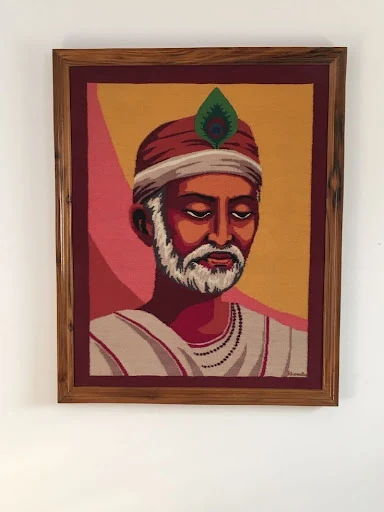Yudhishthira
Yudhishthira, the Wise and Noble Leader of the Mahabharata
The Mahabharata, one of the most revered and ancient epics in Indian mythology, is a tale of honor, righteousness, and the epic battle between the Pandavas and the Kauravas. At the heart of this epic stands Yudhishthira, the eldest of the Pandava brothers, and a character whose unwavering commitment to dharma (righteousness) is central to the narrative.
Yudhishthira, often referred to as Dharmaraja or "the one who upholds righteousness," was born to Queen Kunti and King Pandu. He was known for his virtues, honesty, and deep sense of duty from an early age. Throughout the Mahabharata, Yudhishthira's character serves as a moral compass for the epic's themes of duty, truth, and ethics.
One of the most pivotal moments in Yudhishthira's life is the game of dice that leads to the Pandavas' exile. Yudhishthira's gambling addiction and his inability to refuse Duryodhana's challenge sets in motion a series of events that culminate in the great Kurukshetra War. Despite facing numerous trials and tribulations during their exile, Yudhishthira's unwavering adherence to dharma remains a hallmark of his character.
Yudhishthira's role as a leader and strategist becomes apparent during the Kurukshetra War. He is not only a skilled warrior but also a just and compassionate ruler. His leadership skills are tested on the battlefield as he faces moral dilemmas and makes difficult decisions for the greater good.
The Mahabharata also presents Yudhishthira with profound philosophical questions. His journey to meet Lord Yama, the god of death, and his dog's companionship during this journey symbolize his unwavering commitment to dharma and his detachment from worldly desires. Yudhishthira's ability to answer Yama's questions correctly and his refusal to abandon the loyal dog at the gates of heaven reflect his ultimate triumph over his own weaknesses and his adherence to righteousness.
In conclusion, Yudhishthira's character in the Mahabharata is a testament to the enduring values of dharma, truth, and justice. His journey from exile to the battlefield and his spiritual quest to meet Lord Yama exemplify the depth of his character and his unwavering commitment to upholding righteousness. Yudhishthira's legacy serves as a timeless reminder of the importance of moral integrity and ethical conduct.
The Pinnacle of Virtue: Yudhishthira's Journey to Heaven with a Humble Dog
Among the many poignant episodes in the Mahabharata, one of the most spiritually significant is Yudhishthira's journey to heaven accompanied by a loyal dog. This episode, found in the concluding chapters of the epic, serves as a profound allegory for the concepts of dharma, morality, and ultimate salvation.
After the devastating Kurukshetra War and his triumphant return to Hastinapura, Yudhishthira decided to renounce his kingdom and embark on a pilgrimage to the Himalayas with the intention of achieving heaven in his human form. His brothers, Draupadi, and a faithful dog accompanied him on this arduous journey.
As the Pandavas progressed on their journey, one by one, they fell and perished. Yudhishthira, undeterred by these losses, continued his ascent up Mount Meru. Only the loyal dog remained steadfastly by his side. This dog's presence soon became a symbolic representation of dharma itself, following Yudhishthira in his quest for righteousness.
The climax of this journey unfolded when Yudhishthira and the dog reached the gates of heaven. To his surprise and dismay, he was informed by Lord Indra that he could enter heaven, but the dog was not welcome. Yudhishthira, in a profound display of moral steadfastness, refused to enter heaven without the dog, for he believed it had faithfully accompanied him throughout his journey, symbolizing loyalty and unwavering dharma.
As Yudhishthira stood firm, the dog revealed its true identity as the god Dharma in disguise. Lord Dharma praised Yudhishthira's unwavering commitment to righteousness, his refusal to abandon dharma, and his selfless devotion to duty. Impressed by Yudhishthira's virtue, Lord Dharma granted him access to heaven, where he was reunited with his family and ancestors.
This episode serves as a powerful reminder of the significance of dharma, selflessness, and unwavering morality in one's journey towards spiritual enlightenment and ultimate salvation. Yudhishthira's resolute commitment to the dog, even in the face of divine temptation, illustrates the central theme of the Mahabharata – the triumph of righteousness and the eternal rewards it bestows.
Yudhishthira's journey to heaven with the dog is a profound narrative within the Mahabharata, underscoring the importance of upholding dharma and unwavering morality. It serves as an enduring lesson in righteousness and the ultimate triumph of virtue in the face of adversity.






